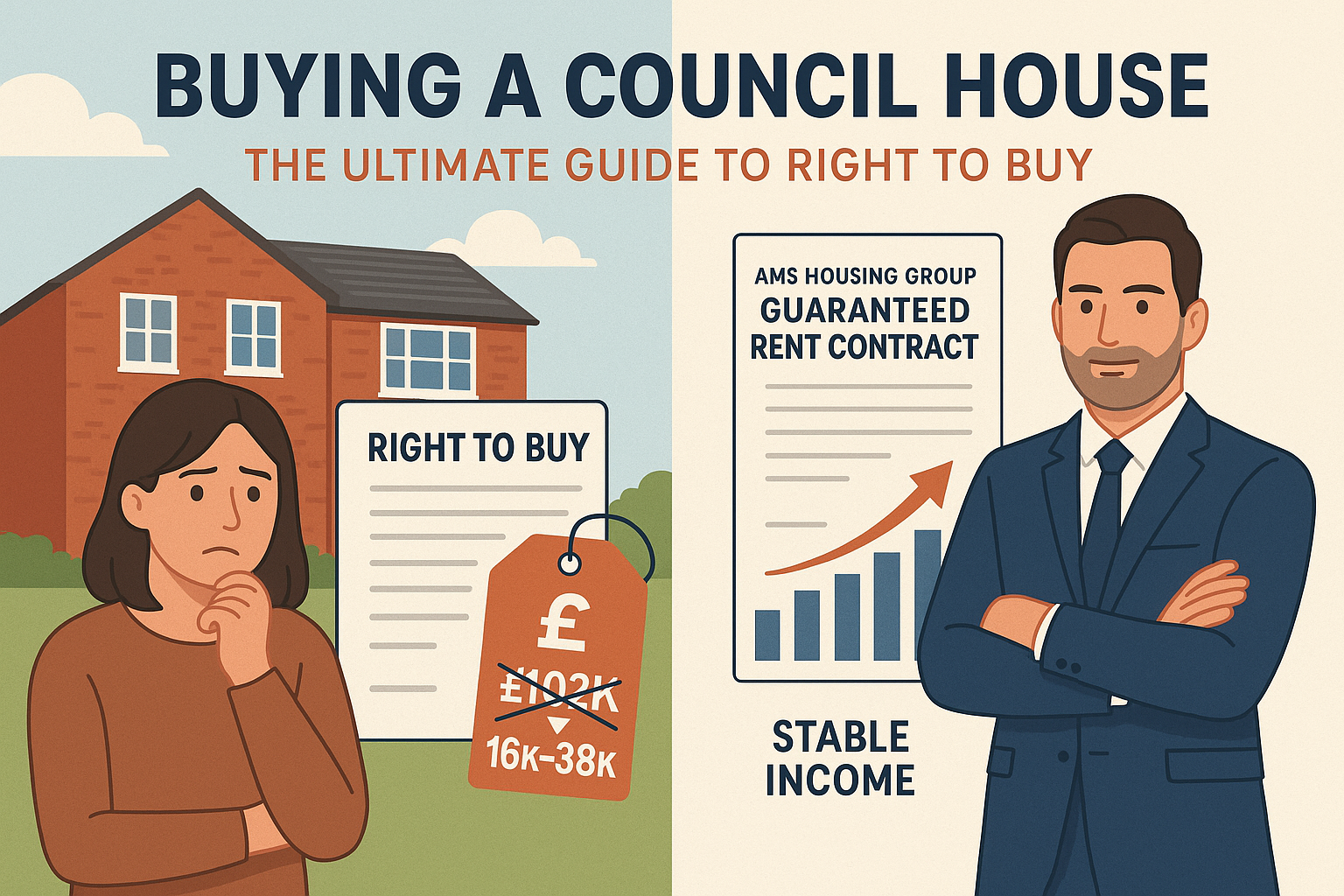As you navigate the current economic landscape, you may be pondering the stability of the housing market. Speculation is rife with talks of a potential housing market crash and it’s essential to recognise the signs that may indicate a downturn is on the horizon.
Understanding these signals is crucial, as they can affect everything from your personal finances to the broader economy.
The health of the housing market is often reflected in key indicators such as property prices, mortgage rates, and consumer confidence. When prices begin to stagnate or fall, it could suggest the market is oversaturated or that buyers are retreating.
A sharp increase in mortgage rates can lead to reduced affordability, prompting a decline in demand. If your keen eye spots these trends amidst the reports and forecasts, it may be time to prepare for a possible shift in the market dynamic.
Experts analyse patterns like the ratio of housing prices to income and the volume of homes being sold. A disproportionate rise in the cost of homes compared to income signals a mismatch in the market that can’t be sustained long-term. Meanwhile, if fewer transactions are taking place, it could be an early warning that confidence is waning and a readjustment in the housing market may be approaching.
Stay informed and you’ll be better positioned to navigate any potential challenges in the property sphere.
Economic Indicators and the Housing Market

The health of the housing market is closely tied to various economic indicators such as interest rates, inflation, and employment data. Understanding these can signal what direction the housing market may be heading.
Interest Rates and Their Impact
Interest rates heavily influence your monthly mortgage payments and the overall affordability of buying a home.
When interest rates rise, borrowing becomes more expensive and can reduce the demand for housing. This, in turn, could lead to a stagnant or declining market if it becomes prolonged.
Conversely, lower interest rates tend to stimulate the market by making mortgages more affordable.
Inflation and House Prices
Inflation can erode the purchasing power of currency—everything gets more expensive, including houses. However, higher inflation often leads to higher interest rates, as the Bank of England may increase rates to manage economic growth.
This can cool off a hot housing market, as loans become more expensive and potential buyers may be deterred.
Employment Data and Housing Affordability
Employment levels are a driver of housing demand.
Should you see rising job losses and increasing unemployment, it reduces the number of people who can afford to buy homes. High unemployment can lead to a surplus of homes on the market, with fewer buyers available. This imbalance often results in falling house prices, making housing more affordable but also signifying a potential market downturn.
Mortgage Market Dynamics
You’ll find that an understanding of mortgage market dynamics is essential in recognising the health of the housing market. Trends in mortgage rates, their impact on first-time buyers, and lenders’ strategic responses provide crucial insights.
Changes in Mortgage Rates
Rising mortgage rates can cool down a hot housing market as your borrowing costs increase.
When the average mortgage rates climb, it typically leads to a decrease in demand for new mortgages. This shift may eventually contribute to a slowdown in house price increases.
Conversely, when lower mortgage rates are on offer, it’s generally a sign of a competitive market that aims to attract more buyers.
Effect on First-Time Buyers
For first-time buyers, the fluctuations in mortgage rates are especially significant.
High mortgage rates can drastically reduce affordability, as your monthly repayments on a fixed-rate mortgage may become more expensive. This often results in first-time buyers being priced out of the market, potentially leading to decreased home sales volumes.
Lenders’ Response to Market Shifts
Mortgage lenders tend to adjust their lending criteria and product offerings in response to market dynamics.
During a period with high mortgage rates, you’ll see lenders becoming more cautious, often requiring higher deposits.
On the other hand, periods with low interest rates can lead to a more relaxed lending environment, where accessing a mortgage may be more straightforward.
Housing Supply and Demand

The balance between housing supply and demand significantly influences the risk of a market crash. Your understanding of current inventory levels, new home construction trends, and sales activity will give you insight into future market directions.
Current Inventory Levels
The National Association of Realtors reports that inventory levels are a crucial indicator of market health.
When inventory levels are low, it can lead to a competitive market with rising prices; conversely, high levels might indicate a surplus that could depress prices. You should monitor regional and national inventory statistics to gauge market pressures.
New Home Construction Trends
Housebuilding trends often reflect the long-term confidence of developers in the housing market.
High levels of new construction usually indicate an anticipation of increased demand. However, should these trends drop, it may signal to you a potential slowdown in market activity and a precaution against over-supply.
Sales Activity And Market Liquidity
Sales data and market liquidity are telling of the demand side of the equation.
Rapid sales and low days on market typically signal strong demand, whereas increasing time on market and reduced transaction volumes can be early signs of a cooling market. Keep an eye on figures released by housing associations to stay informed about the pace and health of the current market.
Regional Market Analyses
In scrutinising regional housing markets, you’ll uncover distinct trends that could signal a looming downturn. Each region carries its unique markers, from the bustling metropolis of London to the varied landscapes of Scotland, Wales, and Northern Ireland.
The London Housing Landscape
In recent months, London’s housing market has shown signs of cooling.
You may observe that prime central London districts are experiencing a more pronounced dip in property values. Figures such as those from Savills indicate a slowing in price growth, with areas like Kensington and Chelsea witnessing declines as demand softens.
Comparing South East and South West Trends
When you examine the South East versus the South West, it’s apparent that the economy and employment rates heavily influence house prices.
The South East, with its proximity to the capital and major commercial hubs, has typically maintained stronger property values. However, recent analyses suggest a convergence, with the South West showing resilience in prices due to a surge in demand for rural and coastal living.
Differences Across Scotland, Wales, and Northern Ireland
Property markets in Scotland, Wales, and Northern Ireland highlight the importance of regional economic strength and policy impacts:
- Scotland: Steady price inclines in cities such as Edinburgh and Glasgow are countered by a stagnation in the more rural areas.
- Wales: With development projects in Cardiff and increased connectivity to England via improved transport links, Wales holds its own, showing modest market growth.
- Northern Ireland: Amidst political uncertainties and slower economic growth, the property market here is more volatile, which could be a precursor to harsher conditions in the event of a downturn.
Historical Perspectives on Housing Bubbles

In assessing the potential for a housing market downturn, you need to look closely at lessons from the past. Historical data, particularly from the 2008 financial crisis, serve as a guide for understanding present-day market dynamics.
Lessons from the 2008 Financial Crisis
The 2008 crash was a stark reminder that housing markets can soar to unsustainable heights and then plummet.
During this period, risky mortgage products and unbridled speculation led to a surge in property prices. However, when the bubble burst, it precipitated a deep recession and a wave of foreclosures.
What you should learn from this is the critical role of lending standards and the dangers of excessive leverage in precipitating housing market crashes.
Recovery Trajectories Post-Recession
After the 2008 downturn, the recovery of housing markets varied significantly across different regions.
Key factors in the recovery included government interventions, such as quantitative easing and interest rate cuts, creating favourable borrowing conditions.
While we’ve faced a global pandemic, the circumstances differ from the Great Recession; yet the path to recovery may offer insights. Housing markets historically have resilience over time, but you must monitor economic indicators and policy interventions for signs of sustained recovery or potential distress.
Predictions from Industry Experts
In navigating the uncertain terrain of the housing market, your decisions should be informed by the insights of industry experts. Their predictions, grounded in data and prevailing economic signals, can play a crucial role in understanding potential market movements.
Economist Insights on Future Trends
Leading economists often provide a broad outlook based on long-term economic indicators which are pivotal for assessing the housing market’s trajectory.
Notably, Lawrence Yun, Chief Economist at the National Association of Realtors, suggests that the affordability of homes is contingent upon a complex interplay of factors, including interest rates, wage growth, and inflation.
He has previously indicated cautious optimism regarding market stability, emphasising that a variety of affordable housing options are essential for market health.
Housing Authorities and Predictive Analysis
You should note that housing authorities frequently conduct comprehensive predictive analyses to gauge future market shifts. These reports can reveal trends in housing affordability and their potential implications for market stability.
For example, a document released by a market research firm indicated a forecasted decrease in house prices by 5-10% in 2024. The report also mentioned that a major crash seems unlikely as per expert consensus.
These insights, derived from systematic analysis, are instrumental in offering you a well-rounded understanding of what to expect from the housing market in the near term.
Potential Impact on Homeowners and Investors
As you navigate the uncertain terrain of the housing market, it’s essential to understand the implications a market downturn can have on your investments, including your home’s value and your financial leverage.
Down Payment and Equity Considerations
When you invest in a property, the down payment you make is critical.
In a stable market, your down payment is the first step towards building equity. However, during a housing crash, home prices can decline, potentially erasing gains and leaving you with less equity than you started with.
For homeowners, this could mean owing more on your mortgage than your home is worth, a situation known as negative equity. As an investor, such a decline can diminish the return on your investments and might limit your ability to sell or refinance.
Navigating a Volatile Property Market
In a volatile property market, being accessible to accurate and up-to-date information is key. You should constantly review market conditions to make informed decisions.
If a market crash seems imminent, homebuyers may find prices becoming more favourable, but the risk of further decline must be weighed against the potential for long-term gains.
Homebuyers should be particularly wary of over-leveraging themselves with a high mortgage to down payment ratio, which could lead to financial strain if the market contracts further.
Investors need to be agile, ready to adjust their strategies, and possibly brace for short-term losses to preserve the long-term viability of their portfolios.
Implications for Financial Markets
Understanding the ripple effect of a housing market downturn on financial markets is critical. You will see that how the Bank of England reacts, and the performance of mortgage securities, can significantly shape the investment landscape.
The Role of the Bank of England
The Bank of England (BoE) operates as the central nervous system for the UK’s financial health.
Should signs point towards a housing crash, the BoE has a toolkit designed to mitigate such financial shocks. Typically, this involves adjusting interest rates to manage the cost of borrowing and liquidity in the market, which can directly impact mortgage accessibility.
Given London’s status as a global financial hub, the BoE’s strategy in steering the economy through potential housing market declines becomes pivotal to maintaining systemic stability.
Mortgage Securities and Investment Outlook
Mortgage securities, often packaged as part of complex financial instruments, are closely monitored by industry leaders and investors for signs of stress that could indicate an impending crash.
When the housing market faces a downturn, like the one suggested by expert warnings, the value of these securities can sharply decline. This decline puts investors on high alert, as it can presage wider financial turmoil.
Your investment outlook should therefore be informed by the performance of these securities, understanding that they serve as a weathervane for the broader economic climate, potentially heralding a recession if they falter.
Frequently Asked Questions
As you navigate the complex landscape of the housing market, understanding the warning signs and historical patterns is crucial for making informed decisions.
What are the indicators of an impending housing market downturn?
Recognising the warning signs of a housing market downturn involves analysing various economic indicators such as a sustained rise in property inventory levels, increased mortgage default rates, and significant changes in housing affordability metrics.
How does historical data forewarn of potential housing market crashes?
Historical data, such as past periods of rapid price inflation followed by corrections, provides crucial insights.
For instance, a pattern of declining equity can be reminiscent of the precursors to previous market downturns.
In what ways might a housing market collapse affect homeowners and investors?
A housing market collapse could lead to a loss of homeowner equity and a negative shift in investor returns, which may result in increased foreclosures and a reluctance among buyers to enter the market.
Considering the 2008 crisis, what lessons have been learned to predict future housing market performance?
The 2008 crisis highlighted the importance of credit market vigilance and the risks of over-leveraging.
Current market assessments thus pay closer attention to lending standards and debt-income ratios to anticipate future market stability.
What economic factors should be monitored to predict changes in house prices over the next several years?
Key economic indicators include interest rate trends, employment figures, and consumer confidence. Shifts in these factors can lead to fluctuations in house prices.
How do real estate experts interpret current market trends to forecast housing stability?
Real estate experts analyse a combination of factors. These include housing demand and supply dynamics, demographic trends, and the overall economic climate, to forecast housing stability and market health.




